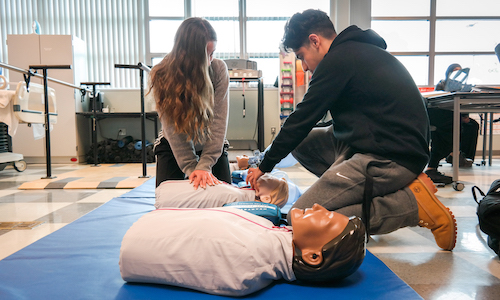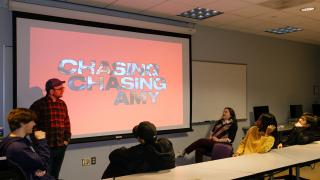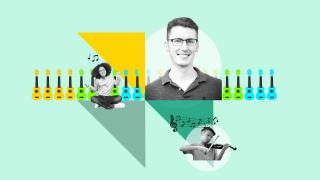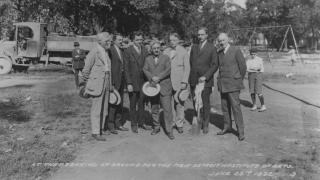
‘What’s the point of high school?’ It’s a time-honored gripe that you’re likely to hear from most American teenagers at some point. It’s not something, however, you expect to hear from their principal. That’s more or less the question, though, that Heyam Alcodray has put to her staff since taking over as head of Fordson High School in January 2016. The UM-Dearborn alum (‘80 B.B.A.) came in as a reformer (her mantra is “education with a purpose”). But she remembers a moment from her first graduation day as principal when fleshing out that purpose started to feel particularly urgent. “I was walking around, chatting with students, saying, ‘Congratulations guys!’ And this one particular group of students said to me: ‘Thanks. But we really have no idea what we’re supposed to do now.’”
The question of what students should aim for post-high school is arguably more complicated than ever. Long gone are the days when merely crossing the finish line was your ticket to a lasting career and a middle-class income. And the paradigm that seemed to replace it — that high school should be preparing every student to go to college — is also showing some wear now, Alcodray says. There are several reasons for that. The rising costs of higher ed is putting college out of reach for many working class families. (At Fordson, more than 80 percent of students qualify for free or reduced lunch.) And many are seeing viable alternative career options in the skilled trades and manufacturing — where labor shortages are real, the wages are solid and there’s often no requirement for a four-year degree.
Given these new realities, Alcodray argues high schools can’t afford to be focused exclusively on college prep; rather, they should be preparing students for “what next.” And what’s next should be defined in terms of the spectrum of real opportunities that’s likely to greet them post-graduation day.
So what does that look like? At Fordson, ninth graders now start their high school careers by choosing one of four “academies,” which are subject-area tracks that roughly correlate to UM-Dearborn’s four academic colleges. That track then helps guide students’ selection of elective courses, with at least one elective per semester coming from the chosen track. All of the academies offer options for either college prep or career prep. For example, a student who’s aiming to study at a four-year university might fill her junior- and senior-year schedule with AP or dual-enrollment courses. A kid on a career-focused track, meanwhile, might concentrate on electives tailored for passing the certification exam for a skilled trade program. Kids are also free to mix and match classes from both the career and college tracks.
“The problem we noticed was that a majority of students were choosing electives that offered the easiest path to graduation,” says John Bayerl, supervisor at Fordson’s Career and Technical Education Office. “But if you’re taking 16 different electives that all start with ‘Intro to,’ then there’s a risk that it doesn’t add up to anything concrete.” Meanwhile, Bayerl says the students who were taking a lot of AP courses and prepping for college, and the career-focused kids who were working toward professional certifications, both had a much easier time answering the “what’s next” question. And their post-high school outcomes were consistently better.
The hope at Fordson is the new structure gives every student that kind of focus. Moreover, the school is working with dozens of community partners to keep the curriculum in sync with the real world. Teachers and school leaders regularly meet with more than 120 area businesses to learn about what careers and skills are most in demand. And partners like UM-Dearborn and Henry Ford College are offering guidance about how to best prepare students for their academic programs. Partner groups are also offering students all kinds of supplemental experiences, including workplace or college tours and mock interviews, to further prep them for their next step.
UM-Dearborn’s College of Education, Health, and Human Services Interim Dean Ann Lampkin-Williams, who’s helping advise on the new curriculum at Fordson, sees big potential in the changes. She says in some ways it mirrors the rigorous college prep models that have become standard in well-resourced school districts, with the added benefit of a career prep path. And the progressive curriculum, in which students are building toward a four-year goal, could help ease another regional education problem. School choice policies have made frequent school changes more common for metro Detroit students, which educators say can have adverse impacts on both students and classrooms. The model at Fordson, she says, could incentivize parents sticking with the same school for their child’s entire high school career.
Lampkin-Williams says tightening our relationship with Fordson’s students also has potential benefits for UM-Dearborn.
“Many are future first-generation college students, they’re coming from an array of backgrounds, and they’re right in our backyard,” Lampkin-Williams says. “That describes much of our enrollment population. So if we can become a player in their educational lives in middle and high school, it’s inevitable that more of them will start dreaming about college. I think they’ll also start dreaming about doing it right here at UM-Dearborn.”






